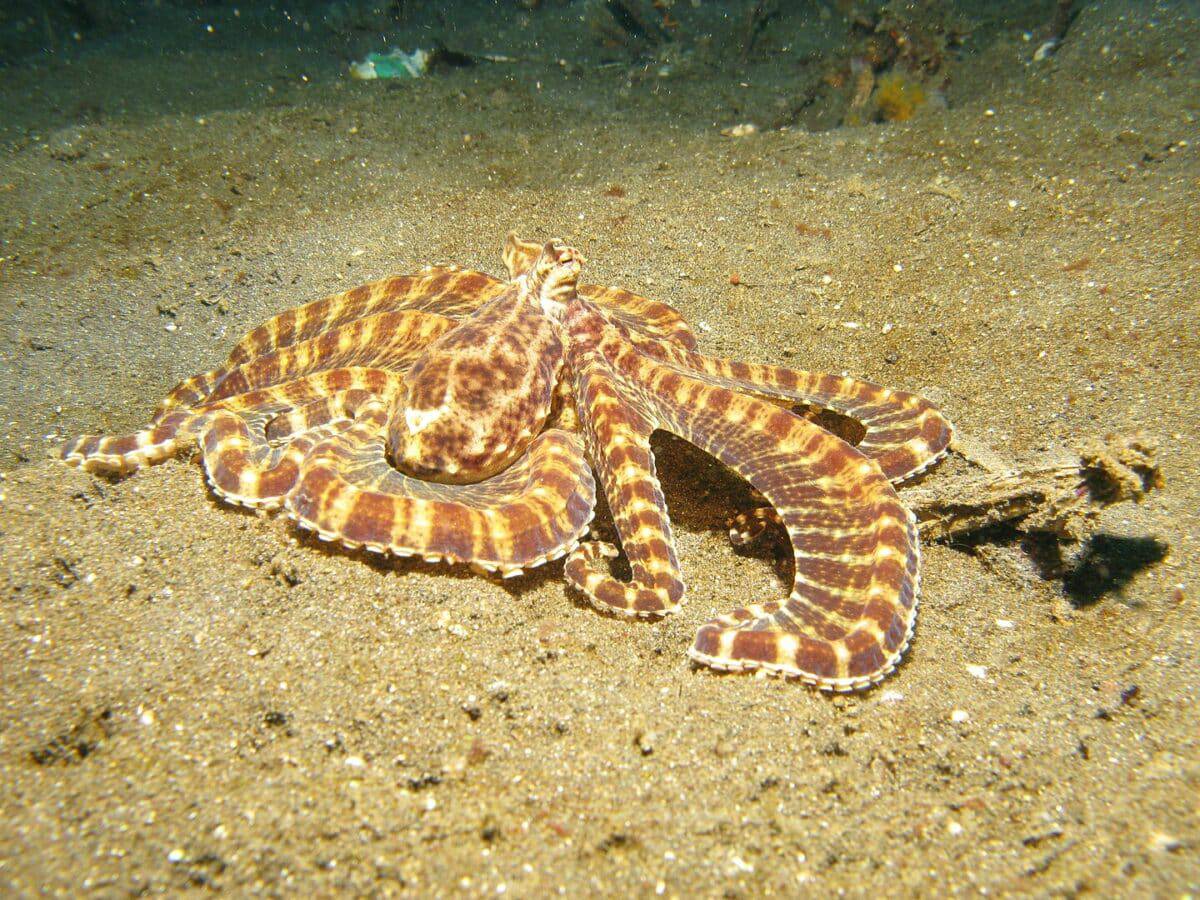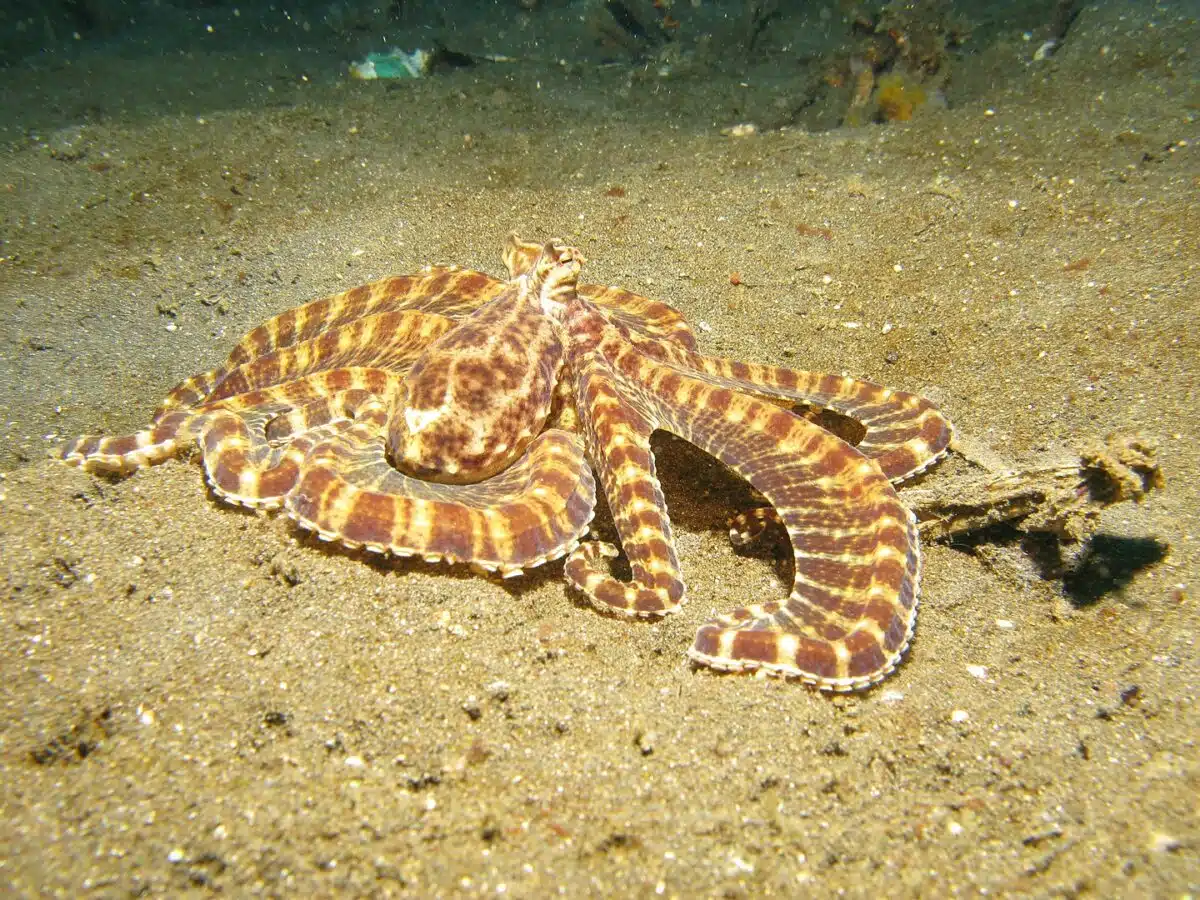The mimic octopus has shape-shifting capabilities like no other creature. Known scientifically as Thaumoctopus mimicus, this remarkable cephalopod has evolved an extraordinary ability to deceive predators and potential prey, making it a true trickster of the sea.
Expert in Camouflage and Mimicry
The mimic octopus has unparalleled skills in camouflage and mimicry. It can alter not only the color of its skin to blend with its surroundings but also its texture and shape. While traversing sandy ocean floors, it can mimic the appearance and texture of sand. Among seagrass, it not only adopts a similar green hue but also imitates the movement and shape of the grasses swaying in the current. This level of deception is far beyond simple color change; it’s a full-body transformation designed to fool even the keenest predators.
Habitat and Distribution
The mimic octopus was first discovered in the late 1990s off the coast of Sulawesi, Indonesia. Since its discovery, researchers have observed the mimic octopus in various locations across Southeast Asia, including the Philippines, Australia’s Great Barrier Reef, and as far west as the Red Sea. These octopuses favor sandy and muddy seabeds in shallow, tropical waters, ideal for utilizing their mimicking skills to maximum effect.

More Than Just Mimicry
The diet of the mimic octopus is as diverse as its habitat. It preys on small fish, crabs, and worms. The octopus uses its ability to camouflage and mimic to avoid predators and sneak up on unsuspecting prey. When faced with danger, the mimic octopus can impersonate venomous species, such as lionfish or sea snakes, deterring would-be attackers.
Predators of the mimic octopus include larger fish, eels, and even humans. However, its ability to blend into its environment and mimic dangerous creatures often enables it to escape unscathed. In instances where mimicry may not suffice, like many of its octopus relatives, the mimic octopus can release a cloud of ink as a last resort. This ink, composed of melanin (the same pigment that colors human skin), is used to disorient predators, allowing the octopus a chance to flee.
The Biology of the Mimic Octopus
Octopuses, in general, are known for their intelligence, and the mimic octopus is no exception. Its brain allows for complex behaviors, including the decision-making involved in selecting which creature to mimic based on the present threat. The octopus’s skin contains specialized cells known as chromatophores, which can change color rapidly. Additionally, it has papillae, which can alter the texture of its skin, allowing it to imitate a wide array of marine life forms and objects.
Conservation and Threats
While the mimic octopus is not currently listed as endangered, it faces threats common to many marine species. Habitat destruction, pollution, and overfishing all pose significant risks. Additionally, the mimic octopus’s unique abilities have made it a target for the aquarium trade, further adding to the pressure on its populations.
You might also enjoy:
Watch The Most Beautiful Octopus – The ‘Rainbow’ Blanket Octopus
Interesting Animals from Down Under – Australia.
Prague Zoo Welcomes the Birth of an Adorable Baby Gorilla
- Meet the Flying Gurnard - June 16, 2025
- 7 Unique Animals You Didn’t Know Existed - June 10, 2025
- Top 20 Colorful Species To Brighten Your Day - June 8, 2025

